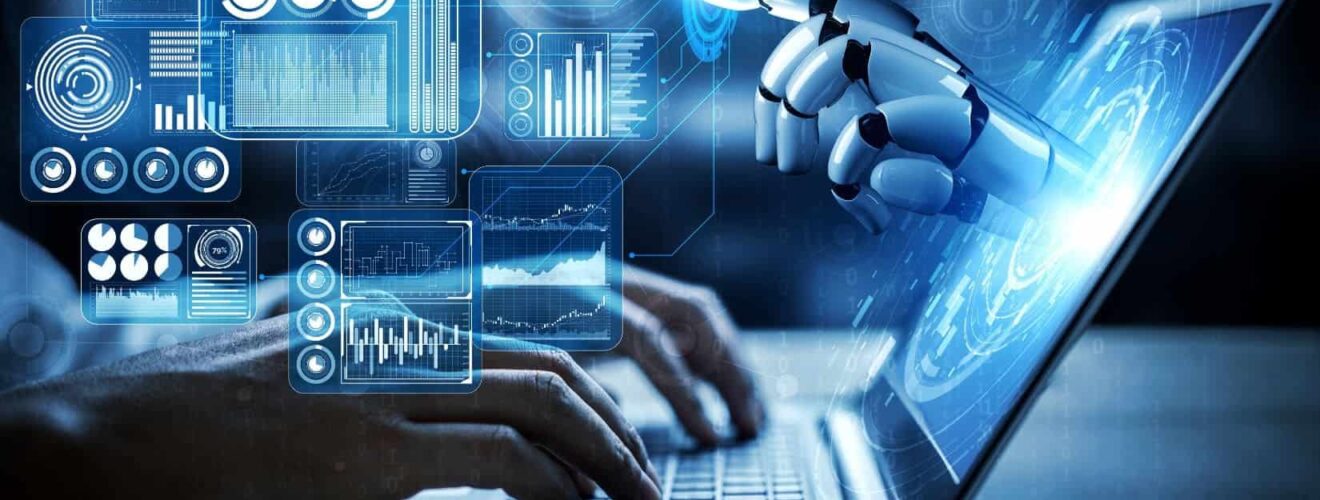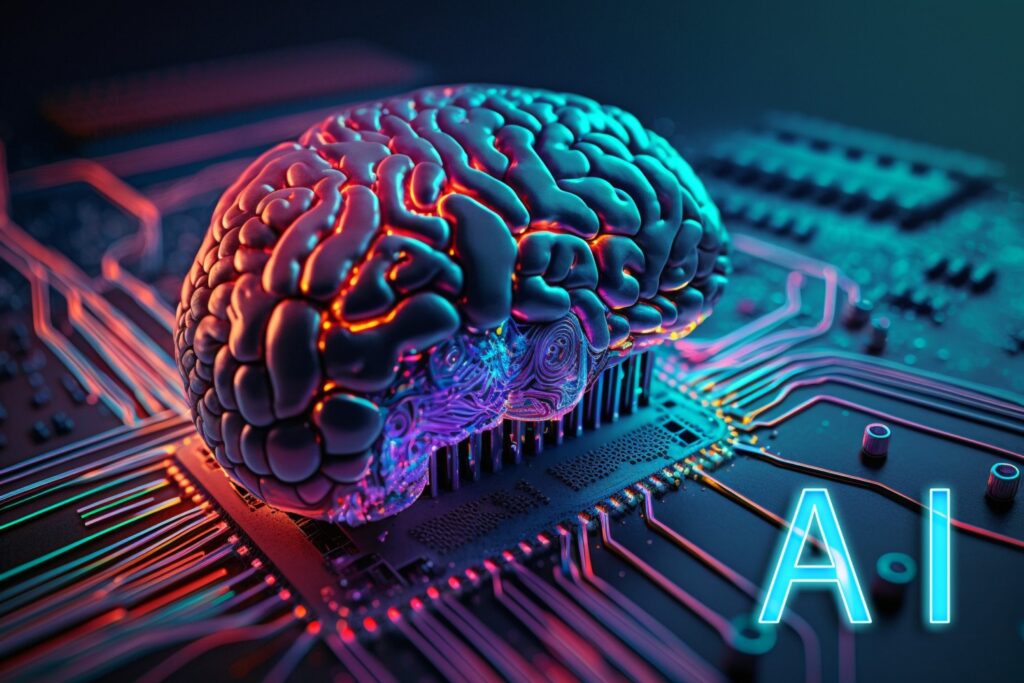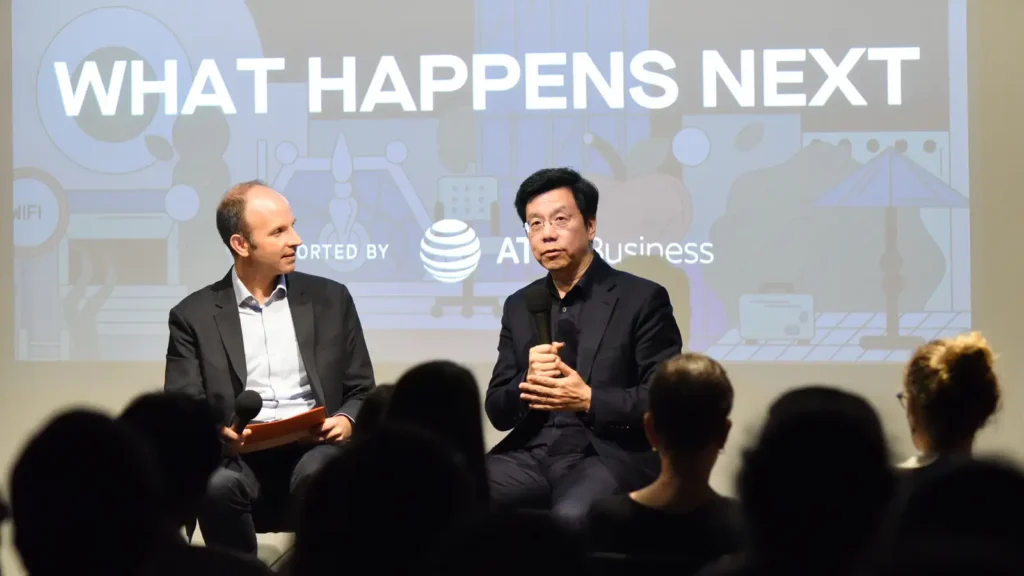The Impact of Artificial Intelligence on the World: A Glimpse into the Future

The dynamic influence of AI is consistently reshaping our world. Here are a few examples of how AI will impact our lives.
The swift evolution of AI may give the impression that the future is a rapidly changing landscape. This is due to the rapid acceleration of innovations in the field of artificial intelligence, making it challenging to stay abreast of the latest developments.

Artificial IntelligenceUndoubtedly, artificial intelligence is playing a pivotal role in shaping the future of humanity across almost every industry. It stands as the primary catalyst for emerging technologies such as big data, robotics, and IoT. Noteworthy examples include generative AI tools like ChatGPT and AI art generators, which have captured mainstream attention. AI is positioned to persist as a technological innovator in the foreseeable future.
Approximately 44 percent of companies express a keen interest in making substantial investments in AI to seamlessly integrate it into their operations. In 2021, IBM inventors secured 9,130 patents, with 2,300 specifically related to AI.
The trajectory suggests that AI is poised to persist in changing the world. The question remains: in what precise ways will it continue to do so?
The Evolution of AI
AI’s influence on technology is due in part because of how it impacts computing. Through AI, computers have the ability to harness massive amounts of data and use their learned intelligence to make optimal decisions and discoveries in fractions of the time that it would take humans.
AI has come a long way since 1951, when the first documented success of an AI computer program was written by Christopher Strachey, whose checkers program completed a whole game on the Ferranti Mark I computer at the University of Manchester.
Since then, AI has been used to help sequence RNA for vaccines and model human speech, technologies that rely on model- and algorithm-based machine learning and increasingly focus on perception, reasoning and generalization. With innovations like these, AI has re-taken center stage like never before — and it won’t cede the spotlight anytime soon.
What Industries Will AI Change?
Practically every major industry has already felt the impact of modern AI, particularly “narrow AI” that executes specific tasks using data-trained models, often falling into the realms of deep learning or machine learning. This influence has become even more pronounced in recent years, with the substantial increase in data collection and analysis, propelled by robust IoT connectivity, a surge in connected devices, and faster computer processing.
Assumptions that the capabilities of intelligent software will eventually plateau are, according to David Vandegrift, CTO and co-founder of 4Degrees, mistaken. Companies are investing billions annually in AI products and services, while tech giants like Google, Apple, Microsoft, and Amazon are allocating substantial funds for their development. Universities are integrating AI more prominently into their curricula, and even the U.S. Department of Defense is intensifying its AI efforts, indicating significant advancements on the horizon.
As articulated by former Google Brain leader and Baidu chief scientist Andrew Ng, some industries may be entering an “eternal spring” of AI development. While various sectors are at different stages of their AI journey, both newcomers and seasoned players alike have a considerable distance to cover. Nonetheless, the undeniable impact of AI on our present-day lives is hard to overlook.
AI IN TRANSPORTATION
The transportation sector stands on the brink of significant transformation due to AI. Aspects such as self-driving cars and AI travel planners are poised to revolutionize the way we navigate from point A to point B. While autonomous vehicles are not flawless at present, the potential for them to transport us seamlessly between locations is a future prospect.
AI IN MANUFACTURING
Manufacturing has reaped the advantages of AI for several decades. The integration of AI-enabled robotic arms and other manufacturing bots dates back to the 1960s and 1970s, showcasing the industry’s adeptness in harnessing the capabilities of AI. These industrial robots commonly collaborate with human workers, handling specific tasks such as assembly and stacking. Predictive analysis sensors contribute to the seamless operation of equipment, ensuring optimal performance.
AI IN HEALTHCARE
AI is already making strides in revolutionizing the healthcare sector, reshaping how humans engage with medical services. Leveraging its substantial capabilities in big data analysis, AI aids in the swift and precise identification of diseases, accelerates and streamlines drug discovery processes, and even facilitates patient monitoring through virtual nursing assistants. While it might appear improbable, AI is actively transforming the landscape of healthcare delivery.
AI IN EDUCATION
AI in education is poised to revolutionize the learning experience for individuals of all ages. Through the utilization of machine learning, natural language processing, and facial recognition, AI contributes to the digitization of textbooks, plagiarism detection, and the assessment of students’ emotions. This enables the identification of those who may be struggling or disengaged. Presently and in the future, AI customizes the learning experience to cater to the individual needs of students.
AI IN MEDIA
AI is increasingly making its mark in journalism, offering ongoing benefits to the field. An illustration of this is The Associated Press’ deployment of Automated Insights, generating thousands of earnings reports stories annually. However, as generative AI writing tools like ChatGPT emerge in the market, questions about their application in journalism are arising.
AI IN CUSTOMER SERVICE
While robo-calls are typically unwelcome, AI in customer service introduces data-driven tools that offer valuable insights for both customers and providers. This comes in the form of AI-powered chatbots and virtual assistants within the customer service industry.
The Impact of AI on Society
HOW AI WILL CHANGE WORK
During a lecture at Northwestern University, AI expert Kai-Fu Lee advocated for the potential of AI technology and its imminent impact. However, he also cautioned about its side effects and limitations. He warned:

“The bottom 90 percent, especially the bottom 50 percent of the world in terms of income or education, will be badly hurt with job displacement … The simple question to ask is, ‘How routine is a job?’ And that is how likely [it is] a job will be replaced by AI, because AI can, within the routine task, learn to optimize itself. And the more quantitative, the more objective the job is—separating things into bins, washing dishes, picking fruits and answering customer service calls—those are very much scripted tasks that are repetitive and routine in nature. In the matter of five, 10 or 15 years, they will be displaced by AI.”
In the bustling warehouses of e-commerce giant Amazon, powered by an army of over 100,000 robots, tasks like picking and packing are currently handled by human workers, but this is poised to change.
The sentiments expressed by AI expert Kai-Fu Lee find resonance in the words of Infosys president Mohit Joshi, who, speaking to The New York Times, noted a shift in mindset towards more ambitious workforce reduction goals, questioning whether operations can be maintained with just one percent of the existing workforce.
On a positive note, Lee emphasized that contemporary AI is deficient in two crucial aspects: creativity and the capacity for compassion or love. He sees AI as a tool to enhance human creativity. His proposed solution involves individuals engaged in repetitive or routine tasks acquiring new skills to remain relevant. Amazon takes this a step further by offering financial incentives to employees for training in preparation for positions in other companies.
Klara Nahrstedt, a computer science professor at the University of Illinois at Urbana-Champaign, stresses that a significant prerequisite for AI success is substantial investment in education to retrain individuals for new jobs. However, she expresses concern that this transformation is not occurring widely or frequently enough. Marc Gyongyosi, founder of Onetrack.AI, goes a step further, asserting that people need to learn programming akin to acquiring a new language, emphasizing its critical role in the future.
While acknowledging that many displaced workers may eventually find new employment opportunities, there is recognition, as stated by Vandegrift, that this transition won’t happen overnight. Drawing parallels with historical economic transitions, such as the shift from agriculture to industry during the Industrial Revolution, he notes that although people ultimately rebounded, the immediate impact was substantial.
Mike Mendelson, a learner experience designer for NVIDIA, approaches education differently, working with developers seeking to delve into AI and apply that knowledge to their businesses. He emphasizes the importance of understanding AI capabilities and domain knowledge, fostering connections to identify potential AI problems, which he finds is more common than developers having specific problems they want to solve.
THE NEAR FUTURE OF AI
Mendelson identifies two particularly compelling areas of AI research with imminent implications. The first is “reinforcement” learning, centered around rewards and punishment instead of labeled data. Noteworthy examples include Google DeepMind’s AlphaGo Zero, showcasing the prowess of reinforcement learning. The second area is generative adversarial networks (GANs), where computer algorithms create rather than assess by pitting two networks against each other. This is demonstrated in original image or audio generation based on learning about specific subjects like celebrities or certain types of music.
On a broader scale, AI is poised to make a substantial impact on sustainability, climate change, and environmental concerns. With the integration of sophisticated sensors, cities are anticipated to become less congested, less polluted, and overall more livable.
The predictive capabilities of AI can lead to the formulation of effective policies and rules, as noted by Nahrstedt. For instance, sensors on cars providing data about traffic conditions could predict potential issues and optimize traffic flow. Although this is still in its early stages, she envisions a significant role for AI in shaping a more sustainable future in the years to come.
AI AND PRIVACY RISKS
The widespread reliance of AI on big data has raised significant concerns about privacy, with notable instances such as Cambridge Analytica’s actions on Facebook and Amazon’s Alexa eavesdropping fueling these apprehensions. Critics argue that without proper regulations and self-imposed limitations, the situation is likely to worsen. In 2015, Apple CEO Tim Cook criticized competitors like Google and Meta, accusing them of data mining driven by greed.
In a speech, Cook expressed his disapproval: “They’re gobbling up everything they can learn about you and trying to monetize it. We think that’s wrong.” He later expanded on his concerns during a talk in Brussels, emphasizing that collecting extensive personal profiles for advancing AI is a form of laziness rather than efficiency. Cook stressed the importance of AI respecting human values, particularly privacy, highlighting the profound dangers if this aspect is mishandled.
These concerns find support in a 2018 paper by UK-based human rights and privacy groups Article 19 and Privacy International. While acknowledging the potential societal benefits of responsibly implemented AI, the authors emphasize the real risk that commercial and state use could negatively impact human rights. They acknowledge benign applications, such as spam filters and recommendation engines, but caution against the potential negative consequences for personal privacy and the right to freedom from discrimination.
Preparing for the Future of AI
THE POSSIBILITIES OF ARTIFICIAL GENERAL INTELLIGENCE
During a speech at London’s Westminster Abbey in late 2018, globally recognized AI expert Stuart Russell humorously (or not) mentioned his “formal agreement with journalists” not to discuss topics involving Terminator robots. This jest revealed his disdain for Hollywood’s dramatic and apocalyptic depictions of far-future AI. Russell highlighted the concept of “human-level AI,” or artificial general intelligence (AGI), which has often been a subject of fantasy. However, he emphasized the slim likelihood of its realization anytime soon or at all, citing the need for major breakthroughs.
Russell pointed out a current limitation of AI, stating that it lacks the ability to fully comprehend language. This distinction between humans and AI lies in the fact that humans can translate and understand machine language, while AI struggles with human languages. Russell envisioned a future where AI gains language understanding capabilities, enabling it to read and comprehend all human knowledge. With this capability, AI could synthesize information, integrate data, and answer questions that no human has been able to address due to historical gaps.
The challenges of emulating the human brain pose another obstacle to the hypothetical future of AGI. John Laird, a longtime professor in engineering and computer science at the University of Michigan, has conducted extensive research in this field for decades.
John Laird, a seasoned professor in engineering and computer science at the University of Michigan, discusses the longstanding goal in AI research to develop a cognitive architecture inspired by human psychology. The aim is to capture the innate aspects of an intelligent system, recognizing the structured nature of the human brain with various components.
Laird emphasizes that the human brain is not merely a uniform set of neurons; it consists of different components with distinct functions. For instance, procedural memory deals with knowledge about how to perform tasks in the world. Other components include semantic memory, which encompasses general factual knowledge, and episodic memory, which holds information about previous personal experiences.
One of the projects in Laird’s lab involves using natural language instructions to teach robots simple games like Tic-Tac-Toe and puzzles. These instructions include goal descriptions, legal moves, and potential failure scenarios. The robot internalizes these directives to plan its actions. However, progress in this field is gradual, and Laird acknowledges that breakthroughs are challenging and take time. Each advancement brings a deeper appreciation for the complexity of achieving AI with human-like cognitive capabilities.
IS AGI A THREAT TO HUMANITY?
The concept of “singularity,” where superintelligent machines surpass human intelligence, has been a subject of concern among leading figures in AI. The late physicist Stephen Hawking warned about the possibility of machines with intelligence far exceeding that of humans, while Elon Musk has labeled AGI as humanity’s biggest existential threat. Musk has expressed concerns about the unintentional creation of “evil” AI and has compared it to “summoning the demon.”
Marc Gyongyosi, while not alarmist, acknowledges that future AI systems might evolve independently, raising uncertainties about their behavior. He notes that the methods currently used may evolve, and the potential outcomes could change.
Although the notion of murderous machines is often confined to fiction, the idea of AI surpassing humans in various domains is a topic of discussion. A survey by Oxford University’s Future of Humanity Institute gathered opinions from 352 machine learning researchers, with optimistic predictions about AI’s evolution. Respondents anticipated machines capable of writing school essays by 2026, self-driving trucks replacing drivers by 2027, AI outperforming humans in the retail sector by 2031, and even becoming successful authors by 2049 and 2053. The survey also suggested that all human jobs might be automated by 2137.
Diego Klabjan, a professor at Northwestern University, expresses skepticism about achieving artificial general intelligence (AGI) in the near future. He points out the vast complexity of the human brain, with billions of interconnected neurons, compared to the current state-of-the-art technology with straightforward connections and patterns. Klabjan sees a significant gap in transitioning from a few million neurons to billions with existing hardware and software technologies.
HOW WILL WE USE AGI?
Diego Klabjan expresses little concern about extreme scenarios involving murderous cyborgs and a post-apocalyptic world. Instead, his focus is on machines, such as war robots, being influenced by faulty “incentives” set by malicious individuals. Max Tegmark, an MIT physics professor and AI researcher, shares a similar perspective, emphasizing that the real threat from AI lies in competence rather than malice. He points out the risk of AI accomplishing goals misaligned with human objectives.
John Laird echoes this sentiment, dismissing the notion of AI spontaneously deciding to take over the world as science fiction. His primary concern is not evil AI but “evil humans using AI” as a false force multiplier for various criminal activities.
Despite frustrations with the slow progress of AI, Laird sees the gradual development as a potential blessing, providing time for understanding and thoughtful incorporation into society. He emphasizes the importance of preparing for the potential breakthroughs in AI, urging discussions on ethical use, regulation, elimination of data bias, and the development of security measures.
Stuart Russell, during his talk at Westminster, acknowledges the challenge of predicting when conceptual breakthroughs will occur. Regardless of the timeline, he underscores the need for preparation. This involves ethical discussions, regulatory considerations, addressing data bias, implementing security measures, and maintaining humility in determining the responsible use of AI. Max Tegmark echoes this sentiment, emphasizing the potential for either disastrous consequences or a positive future, depending on how society navigates the development and deployment of AGI.








